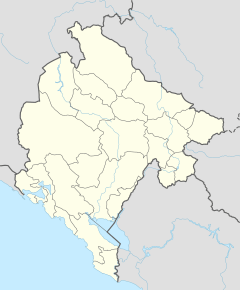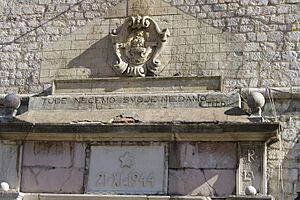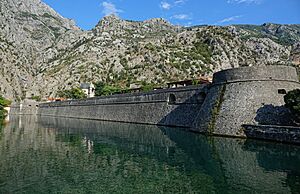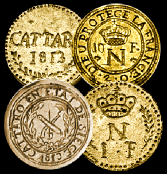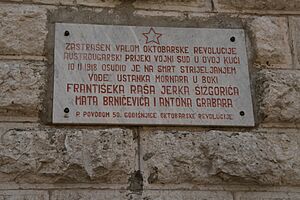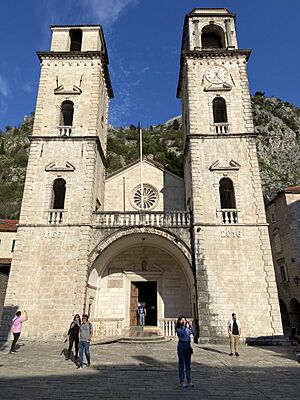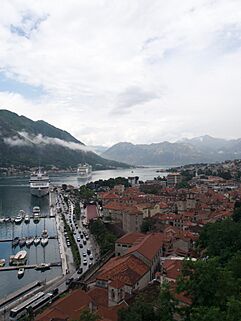Kotor facts for kids
Quick facts for kids
Kotor
Котор
Cattaro
|
|||||||||||||||
|---|---|---|---|---|---|---|---|---|---|---|---|---|---|---|---|
|
|
|||||||||||||||
|
|||||||||||||||
| Country | |||||||||||||||
| Founded | 5th century BC | ||||||||||||||
| Area | |||||||||||||||
| • Municipality | 335 km2 (129 sq mi) | ||||||||||||||
| Population
(2023)
|
|||||||||||||||
| • Urban | 13,347 | ||||||||||||||
| • Rural | 8,569 | ||||||||||||||
| • Municipality | 21,916 | ||||||||||||||
| Time zone | UTC+1 (CET) | ||||||||||||||
| • Summer (DST) | UTC+2 (CEST) | ||||||||||||||
| Postal code |
85330
|
||||||||||||||
| Area code | +382 32 | ||||||||||||||
|
|||||||||||||||
Kotor is a beautiful town in the coastal part of Montenegro. It is known for its old port and strong walls. The town is nestled in a quiet part of the Bay of Kotor. About 13,347 people live in the city itself. It is the main town for the Kotor Municipality.
Kotor's old port is surrounded by amazing walls. These walls were built a long time ago when the Venetians ruled the area. The Bay of Kotor is a very unique part of the Adriatic Sea. It looks like a fjord, but it's actually a "ria." A ria is a river valley that has been flooded by the sea.
The town and its surroundings are very impressive. Towering limestone cliffs like Orjen and Lovćen rise sharply from the water. This creates a stunning natural landscape.
In recent years, many tourists have discovered Kotor. They come to see the beautiful Bay of Kotor and the historic old town. Many arrive by cruise ship. Kotor is so special that it's part of a World Heritage Site. This site is called the Natural and Culturo-Historical Region of Kotor.
In 2017, the fortified city of Kotor was also added to another UNESCO World Heritage list. This list includes "Venetian Works of Defence between the 16th and 17th centuries." These are old defense structures built by the Venetians.
Contents
Kotor's Rich History
Early Beginnings
Long ago, the area where Kotor stands was home to the Illyrians. We don't know the exact year the first settlement was founded. Some say people have lived here for over 2,000 years!
The city was first mentioned in 168 BC. It was settled during Roman times. Back then, it was known as Acruvium or Ascrivium. It was part of the Roman province called Dalmatia.
Medieval Times
Kotor has had strong defenses since the early Middle Ages. In 535 AD, Emperor Justinian built a fortress above Ascrivium. This happened after he drove out the Ostrogoths. Later, in 840, the city was attacked by the Saracens.
In the 10th century, Emperor Constantine VII made the defenses even stronger. He fortified the area towards the peak of Saint Ivan. Kotor was an important city-state in Dalmatia. People there spoke a language called Dalmatian until the 11th century. The name Kotor likely comes from the Byzantine name for the city: Dekatera.
In 1002, the First Bulgarian Empire occupied Kotor. The next year, it was given to Duklja. Duklja was a powerful Serb duchy. The people of Kotor resisted this and kept their independence. Duklja became fully independent from Byzantium in 1042. However, Kotor was later brought under Byzantine control again in 1143.
In 1185, Stefan Nemanja conquered the city. He was the ruler of the Grand Principality of Serbia. Under Serbian rule, Kotor became a partly independent city. It had many special rights and kept its own government. A document from 1301 shows that Kotor was a city under Serbian rule.
In the 14th century, Kotor's trade was so strong it rivaled Dubrovnik. This made the Republic of Venice envious. Kotor remained a very important trading port for Serbian states. This lasted until their downfall in 1371.
After the Serbian Empire broke apart, the Kingdom of Hungary took over Kotor. The city then changed hands many times between Hungary and Venice. From 1384 to 1391, the Kingdom of Bosnia ruled Kotor. Its king, Tvrtko I Kotromanić, even minted coins in Kotor.
After Tvrtko's death in 1391, Kotor became fully independent. But the city leaders worried about the growing Ottoman threat. So, in 1420, they asked Venice for protection.
Venetian Rule and Influence
Kotor was part of the Venetian Republic from 1420 to 1797. It was part of their "Venetian Albania" province.
Four centuries of Venetian rule shaped the city's look. This is why Kotor has so much beautiful Venetian architecture. This unique style helps make Kotor a UNESCO World Heritage site.
During the 15th and 16th centuries, people from nearby regions moved to Kotor. The city was attacked by the Ottoman Empire in 1538 and 1657. It also suffered from the plague in 1572. Earthquakes in 1563 and 1667 almost destroyed the city.
Habsburg and Napoleonic Eras
After 1797, Kotor became part of the Habsburg monarchy. But in 1805, it was given to the French Empire's client state, the Napoleonic Kingdom of Italy. This was decided by the Treaty of Pressburg. However, a Russian fleet actually held the city for a while.
After the Russians left, Kotor joined the Kingdom of Italy in 1806. Then, in 1810, it became part of France's Illyrian Provinces. The British captured Kotor in 1814. They were led by Commodore John Harper. British sailors even pulled a ship into the bay with ropes! They also moved heavy cannons up to Fort St. John. The French soldiers had to surrender on January 5, 1814.
Kotor was given back to the Habsburgs by the Congress of Vienna. Until 1918, the town was known as Cattaro. It was the main town of a district in the Kingdom of Dalmatia.
World War I and II
During World War I, Cattaro was a major base for the Austro-Hungarian Navy. It was home to their Fifth Fleet and a base for submarines. In February 1918, sailors of the Austro-Hungarian Navy started a mutiny in Kotor. It lasted three days before loyal troops arrived. Four sailors were executed for their part in the mutiny.
The area around Kotor saw fierce battles between Montenegrins and Austria-Hungary. After 1918, the city became part of Yugoslavia. Its official name changed to Kotor.
Between 1941 and 1943, the Kingdom of Italy took over the Kotor area. It became one of three provinces in Italian Dalmatia. After World War II, many Dalmatian Italians left Kotor for Italy.
Main Attractions
Kotor has one of the best-preserved medieval old towns on the Adriatic Sea. It is a double Unesco World Heritage Site. This means it's recognized for both its natural beauty and its historical importance. It's part of the Natural and Culturo-Historical Region of Kotor. It's also part of the Venetian Works of Defence between the 16th and 17th centuries: Stato da Terra – western Stato da Mar.
The city has many interesting places to see. One is the Cathedral of Saint Tryphon in the old town. It was built in 1166. The ancient walls stretch for about 4.5 kilometers right above the city. The islets of Sveti Đorđe and Gospa od Škrpijela near Perast are also popular tourist spots.
Culture and Events
Kotor hosts several fun summer events. These include the Summer Carnival and Bokeljska Noć (Boka Night). In May 2009, Kotor helped host a big carnival congress.
The Kotor Festival of Theatre for Children is a very important festival. It's one of the biggest of its kind in Southeast Europe. For 30 years, artists from over 30 countries have performed here. The festival started in 1993. It even won an award from the European Festivals Association in 2017/18. Many volunteers help make the festival a success.
Kotor is also famous for its many cats! These cats have become a symbol of the city. You can find several cat stores and even a cat museum. There's even a place called Cats' Square (Trg od mačaka). People leave food and water for the cats all over the city. You might see cardboard boxes arranged for them to sleep in. A charity called Kotor Kitties helps the cats by spaying and neutering them.
Population and People
| Historical population | ||
|---|---|---|
| Year | Pop. | ±% |
| 1948 | 14,124 | — |
| 1953 | 15,436 | +9.3% |
| 1961 | 16,642 | +7.8% |
| 1971 | 18,917 | +13.7% |
| 1981 | 20,455 | +8.1% |
| 1991 | 22,410 | +9.6% |
| 2003 | 22,947 | +2.4% |
| 2011 | 22,601 | −1.5% |
| 2023 | 21,916 | −3.0% |
| Source: pop-stat.mashke.org | ||
Kotor is the main town of the Kotor municipality. This area includes towns like Risan and Perast. It also has many small villages around the Bay of Kotor. The total population of the municipality was 21,916 in 2023.
The old town of Kotor itself has 1,360 residents. But the urban area of Kotor is larger. It includes Dobrota (7,345 people) and Škaljari (3,342 people). This brings the population of Kotor's urban area to nearly 13,000. If you add nearby villages, the number rises to about 15,000.
In 2011, the people living in the municipality identified as:
| Ethnicity | Number | Percentage |
|---|---|---|
| Montenegrins | 11,047 | 48.88% |
| Serbs | 6,910 | 30.57% |
| Croats | 1,553 | 6.87% |
| Other/undeclared | 3,091 | 13.68% |
| Total | 22,601 | 100% |
Until the 1800s, the main language in Kotor was Italian. Over time, Serbian became more common. Most of the Italian minority left the city after 1920. Today, only a small number of people in Kotor identify as Italian.
In 2011, most citizens of Kotor (78%) were Orthodox Christians. About 12% were Roman Catholic. Kotor is still the home of the Catholic Bishopric of Kotor.
Sports in Kotor
Kotor has a local football (soccer) team called FK Bokelj. They have played in Montenegro's top and second leagues. Their home games are at the Stadion pod Vrmcem.
Water polo is a very popular sport in Montenegro, and Kotor is a national leader in it. The team Primorac Kotor won the LEN Champions League in 2009. Another club from Kotor, VA Cattaro, won the LEN Euro Cup in 2010.
Getting Around Kotor
Kotor is connected to the Adriatic Highway. This road links it to the rest of the coast and inland Montenegro. You can reach inland areas by taking a detour from the Adriatic highway.
Tivat Airport is only about 5 kilometers away. It has regular flights to cities like Belgrade, Moscow, Paris, and London. Many charter planes also land there during the summer.
Podgorica Airport is about 65 kilometers away. It has regular flights to major European cities all year round.
Tourism in Kotor
Kotor is a very popular place for tourists in Montenegro. This is because its medieval architecture is so well-preserved. In 2019, over 250,000 tourists visited the city.
In June 2021, Montenegro's first public aquarium opened in Kotor. It's called Aquarium Boka. This aquarium is part of the Institute for Marine Biology. It helps people learn about and protect marine life. In its first three months, over 8,000 people visited the Aquarium.
Sister Cities
Kotor is twinned with these cities:
 Děčín, Czech Republic
Děčín, Czech Republic Campomarino, Italy
Campomarino, Italy Nesebar, Bulgaria
Nesebar, Bulgaria Přerov, Czech Republic
Přerov, Czech Republic Santa Barbara, United States
Santa Barbara, United States Stari Grad (Belgrade), Serbia
Stari Grad (Belgrade), Serbia Subotica, Serbia
Subotica, Serbia Szeged, Hungary
Szeged, Hungary Trogir, Croatia
Trogir, Croatia
See also
 In Spanish: Kotor para niños
In Spanish: Kotor para niños








